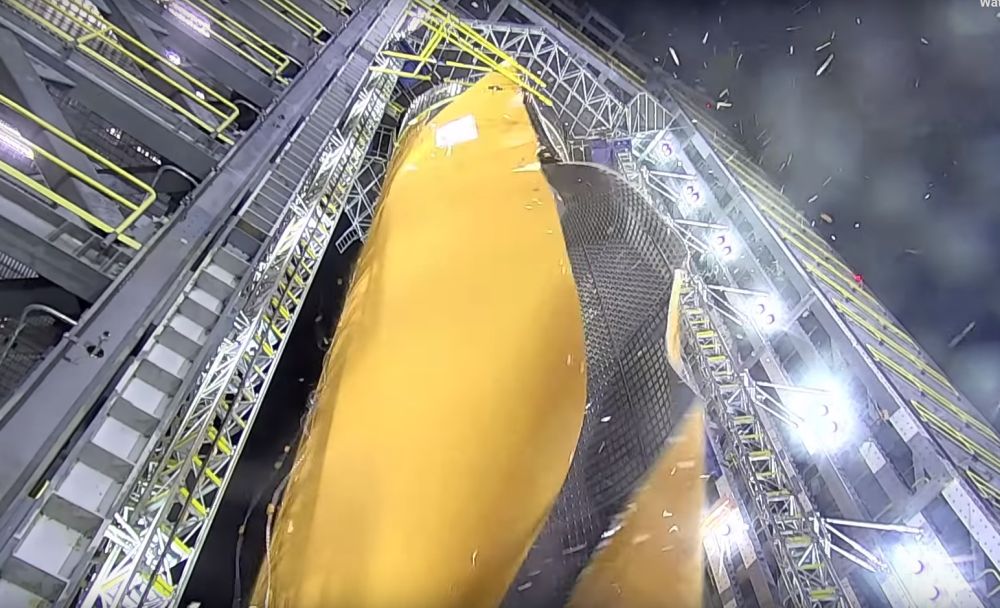By the time a rocket actually launches, it’s components have been through a ton of rigorous testing. That’s certainly true of NASA’s SLS (Space Launch System) which is the most powerful rocket ever built. That’s right, something is finally going to surpass the Saturn V, the rocket that took Apollo astronauts to the Moon.
Up until now, there’s been no need for something more powerful. But with more ambitious missions on the horizon—to Mars for example—a more powerful rocket is required. NASA has been working on the SLS, getting it ready for its first mission: getting Artemis to the Moon.
They recently tested the 40 meter tall (130 ft) liquid hydrogen tank to it’s breaking point. And in this test, failure meant success.
The December 5th test took place at NASA’s Marshall Space Flight Center in Huntsville, Alabama. During this test, the tank was tested with a combination of liquid nitrogen for pressure and hydraulics for loads. The liquid hydrogen tank was subjected to more than 260% of its expected flight loads before failing. Eventually, it ruptured and buckled, right when engineers calculated it would.
The tank already passed earlier tests and is now certified for use on the SLS Block 1, which will use an upper stage called the Interim Cryogenic Propulsion Stage. The US Congress requires Block 1 to lift 95 metric tons (209,000 lb) to low Earth orbit. It’s also certified for the Block 1B version that will replace the ICPS with the more powerful Exploration Upper Stage. Block 1B will be used to send Artemis payloads to the Moon.

